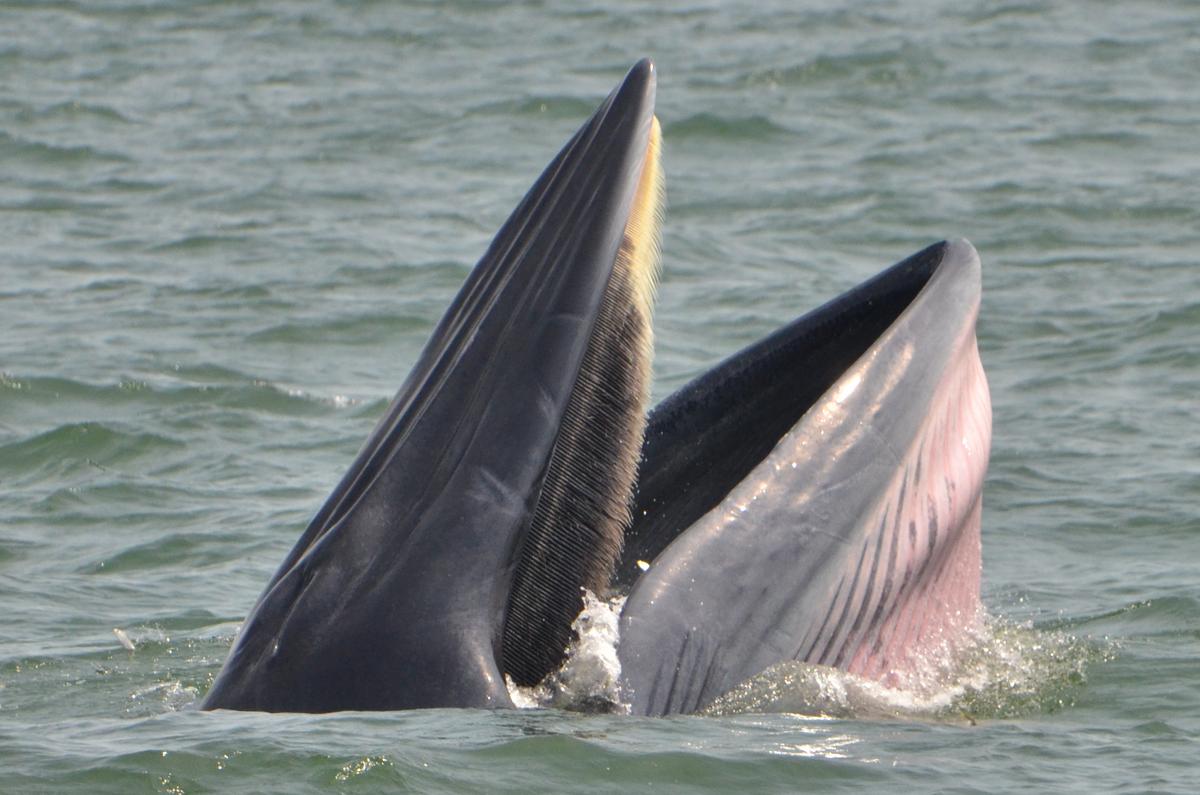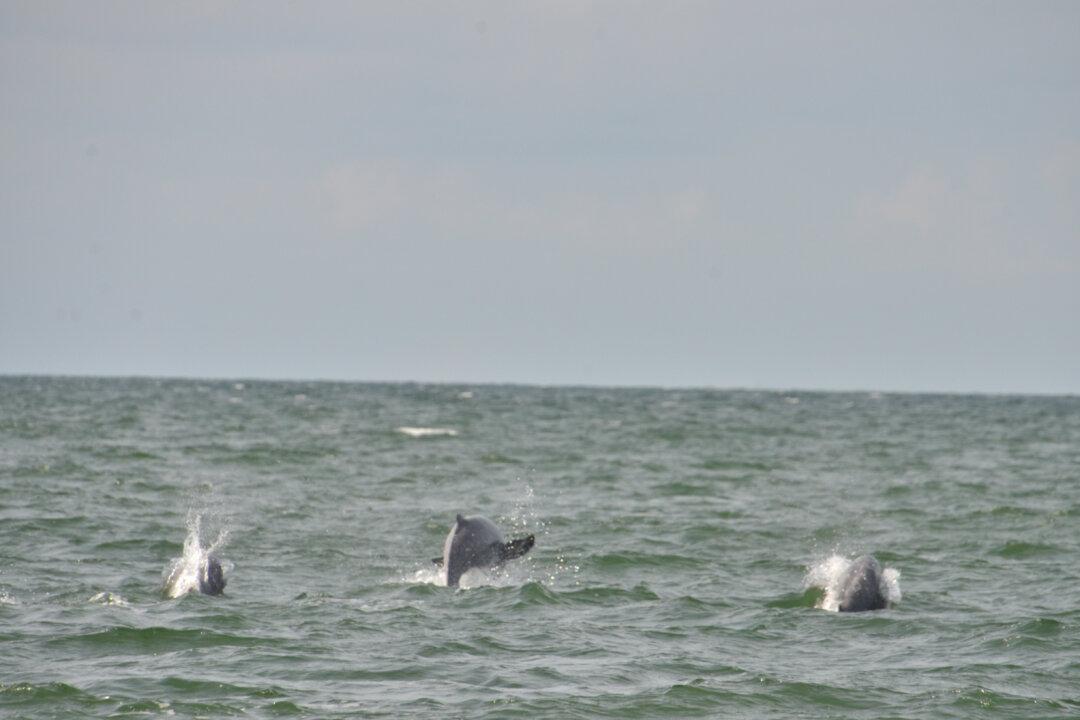I’ve spent plenty of time over the years on or around Bangkok’s Chao Phraya River, its banks lined with historic buildings, hotels, temples, and restaurants, and its waters a thoroughfare for commuting ferries and barge traffic—so much to explore and ideal for a sundowner at a bar. But I’d never been to its final destination, where it empties into the sea in the upper Gulf of Thailand. And I certainly never expected to find whales there.

A Bryde’s whale showing its pink underside. Kevin Revolinski





